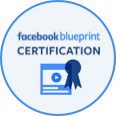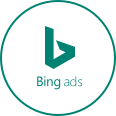
When Google decided to sunset the Average Position metric in 2019, many marketers were unhappy with that decision. In the past, many PPC marketers relied on Average Position as a key component of their criteria for aggressive bidding.
This metric made it easy to know how well your ads were performing, what your ROI was like, and how well your ads were doing compared to the ads of other companies. Letting go of this metric may trigger uneasiness or even panic in some marketers.
People, in general, are resistant to change, and marketers are no exception. The good news is that it’s possible to transition to other metrics without impacting your success.
Why Did Google Sunset the Average Position Metric?
In Google’s view, the Average Position metric had become less valuable because the information it provided was sometimes misleading. Knowing your average position didn’t give you the whole story on where your ads were showing, so Google recently came to the conclusion that using this metric could lead marketers to make ineffective bidding decisions.
Competitive Metrics to Rely on Instead of Average Position
Without Average Position, what competitive metrics can marketers rely on? The prominence of an ad on the page can be seen more clearly using several different metrics. One of the most helpful metrics is Search Top Impression Share, which is the percent of ad impressions that were shown above the organic results divided by the number of impressions you were eligible to show above the organic results.
When Google refers to “Top”, they’re referring to anywhere above the organic search results. Impressions considered eligible are based on targeting settings, bids, approval statuses, and quality.
Search Absolute Top Impression Share is the same idea but based on the impressions that are the very first ad above organic search results. Top Impression Rate gives you information about the percent of impressions that are coming from the top of the search results page, meaning above the organic results.
Leveraging Metrics to Meet Target Goals
The information you can gain from these new metrics offers reliable indicators that show how well you’re turning opportunities into actual impressions. Many marketers feel these new metrics are more insightful than Average Position, and this clarity can lead to making more informed bidding decisions.
Targeting impression share helps you make sure your ads are visible and helping to raise awareness of your brand. Set your targets by looking at performance across your impression metrics.
Getting Expert Help with Changes to PPC Advertising
Success with PPC advertising means being ready to continually learn new things and improve your strategies since one thing you can count on is that paid marketing is competitive and continually evolving. To be successful, it’s important to stay on top of changes that Google implements as soon as they happen.
Need help using the new key competitive metrics? The experts at Softline Solutions can take the confusion out of changes to PPC advertising. Contact us today and find out how we can help you meet your online potential.









